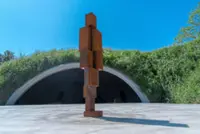The Wishnu and Garuda sandstone statue (from Indonesia) dates back to 1043 AD and is one of the main highlights of the 'Lost Kingdoms' exhibition. Photo: The Star/Art Chen
The Lost Kingdoms exhibition at Muzium Negara in Kuala Lumpur is not your average ancient artefacts show.
It took senior curator Mohd Nasrulamiazam Mohd Nasir (Nasrul) and his team nearly two years to put together, complete with regional research work.
Already a subscriber? Log in
Save 30% OFF The Star Digital Access
Cancel anytime. Ad-free. Unlimited access with perks.





